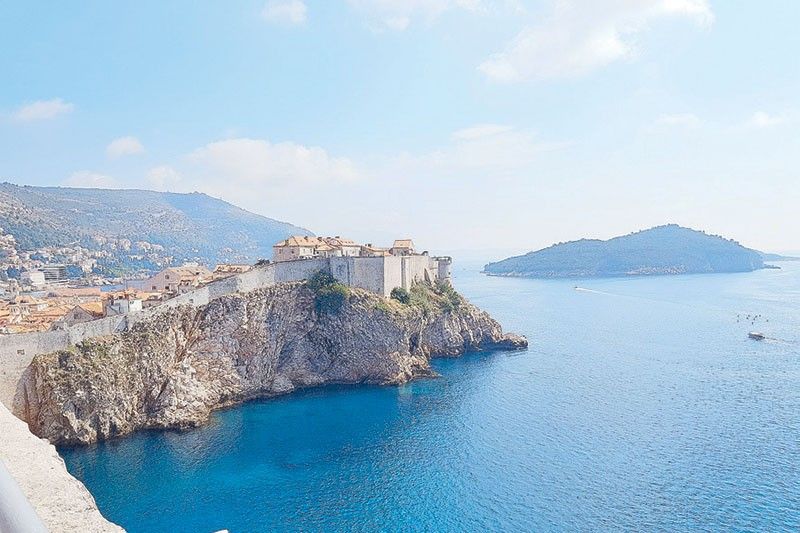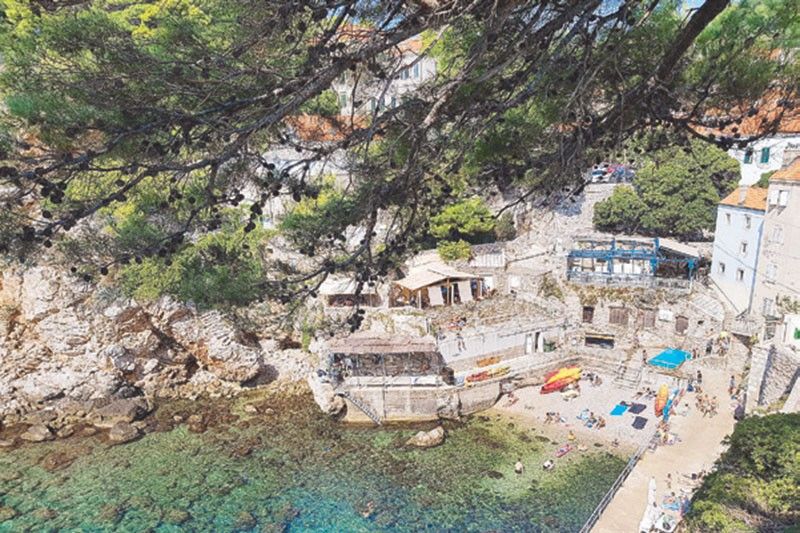Dreaming of Dubronik


Live a life you will love to remember. This I experienced in southern Croatia when my family and I visited Dubrovnik months before the pandemic happened.
Boundless history contained within imposing stone walls, surrounded by the sapphire-blue Adriatic water — a walled city favored by Hollywood producers and cruise-goers alike, Dubrovnik is in a league of its own.
I am taken back to the days gone by, pre-mask, pre-quarantine, when I walked the cobblestone paths once trod by traders of every empire, socialites and celebrities, and even soldiers defending against siege.
In Dubrovnik, there is history in every pebble, in every breath of air. From the Placa, a path that runs from the western Pile gate to the eastern Ploce gate, or the paths around the city walls, you cannot escape the feeling that you have been transported back in time.

The Adriatic Sea, blue as any of the finest waters in the world, provides a breathtaking, scenic backdrop to this gem of a city. Crystal clear and cool to the touch, I enjoyed one of the mini-beaches that lay outside the impervious stone walls, oblivious to the thousands of tourists that lined the streets of the Old City every day.
As my feet mingled with the soft waves, I thought about how many times I’d seen Dubrovnik in film before finally arriving to see it with my own two eyes. From the epic saga of Game of Thrones as the city of King’s Landing, to the sci-fi wonder of Star Wars as the casinos of the planet Canto Bight, it is plain to see how filmmakers fall in love with this destination to make their ideas come to life on screen.

I chose to travel to Dubrovnik to experience a city of four empires, kingdoms and republics, each leaving its own imprint on the city. From the Byzantine empire to Austria-Hungary, including its own golden era as the Free Republic of Ragusa, Dubrovnik’s architecture, language, and even cuisine bear the fingerprints of multiple cultures.
I arrived in Dubrovnik by car, allowing me to take in the beauty of the Dalmatian coastline and countryside. Most travelers to Dubrovnik arrive by busy and bustling cruise ships, in and out within one day. In this manner, they miss out on many of the intricacies of Dubrovnik, especially the areas outside the old town.
Of course, many of these visitors rush to see the sights from the hit TV series Game of Thrones (GoT). While I never watched the show, even on my guided walking tour, scenes and characters from it were described at historic Dubrovnik landmarks, interspersed with real snippets of Ragusan history. Dubrovnik and King’s Landing, for two hours, became one and the same, for many buildings within and around the walls of the Old Town were used in filming the HBO-produced epic. One detour from GoT mania brought us to the Fort of St. Lawrence, where a scenic view awaits the weary traveler. The walls of the city, the hills and the sea greet your eyes in vibrant color, with the sun painting every roof and wave in washes of brilliant light.
At the end of the tour, GoT fans were delighted with a free picture of themselves sitting upon the famous Iron “Throne” of the show. As for myself, my next priority was to enjoy an authentic Dubrovnik dinner. Black squid ink risotto, macaroni with ragu, seafood stew and rozata pudding, a creme brulee-like dessert made with rose liqueur, capped off my day.
T
he next day, I learned a lesson that would someday prove to be very poignant. The practice of quarantining started in Dubrovnik, during the era of the Republic of Ragusa, in 1377, to prevent the spread of the Black Death. Travelers and traders were forced to stay outside the Old Town for 40 days upon the islands surrounding the city before entering. The practice was called quarantino, referring to the 40-day period they had to wait it out. Dubrovnik, it turns out, is home to the oldest quarantine site in the world. Little did I know, one day we would be practicing something similar all over the world — something that started in the little city of Dubrovnik.
Within the walls, I explored the buildings that survived the earthquake of 1667, like the Rector’s Palace and the Sponza Palace, housing a museum and archives, respectively.
There are also many notable churches like St. Blaise’s Church, St. Ignatius Church, and the Assumption Cathedral of Dubrovnik.
The Old Town is only 13.38 hectares in size, but the outside is still very much Dubrovnik. Many hotels, resorts and great restaurants can be found outside, as well as historic landmarks like the cross atop Srd, a small mountain that overlooks all of Dubrovnik, and the French-built Fort Imperial which now houses a museum detailing the Siege of Dubrovnik during the Homeland War. To access both of these, one must take a cable car that offers stunning views, especially during sunset.
As I took in the sunset, I enjoyed Dalmatian wine, cheese from the Adriatic islands, and prsut, a Croatian ham. As the rays of the sun gleamed across this wonderful city, I could think only of returning again one day to enjoy this chapter of history in the long and storied book that is Dubrovnik. Memories like these will last more than a lifetime.
* * *
Email the author at miladay.star@gmail.com.















